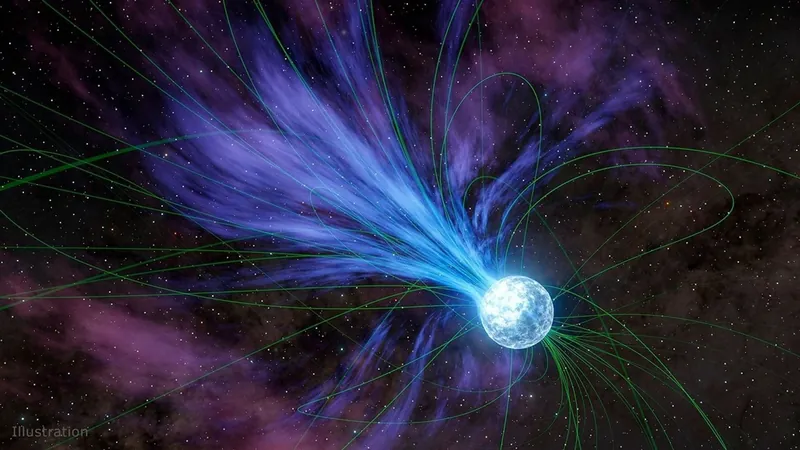
Unlocking the Cosmic Secret: Where Did the Universe's First Gold Come From?
2025-04-30
Author: Daniel
The Golden Mystery of the Cosmos
For years, scientists have been on a quest to uncover the origins of gold in the universe, and new findings may finally provide answers. A groundbreaking study suggests that neutron stars known as magnetars, which emit powerful flares, may have started forging gold not long after the Big Bang—much earlier than previously believed.
What Are Magnetars?
Magnetars are neutron stars with extraordinarily strong magnetic fields. Researchers have long known that these celestial phenomena could produce heavy elements through cataclysmic events like supernovae and star mergers. But it wasn't until 2017, when astronomers observed a neutron star merger 130 million light-years away, that they first detected the specific signatures of heavy metals, including gold.
Filling the Gaps in Gold's Origin
Despite the revelations from the 2017 merger, scientists still struggled to explain how gold formed so early in the universe's history, given that not enough time had elapsed for mergers to account for the abundance of heavy metals. Now, this new research sheds light on that cosmic conundrum.
"It's answering one of the questions of the century," says Eric Burns, a co-author of the study from Louisiana State University.
Extreme Explosions: The Key to Gold's Creation
The study claims that magnetars may have contributed up to 10% of all elements heavier than iron in our Milky Way. By analyzing two decades of data from NASA and ESA telescopes, researchers homed in on magnetars as the universe's hidden sources of gold. Recent findings highlight that the giant flares produced by magnetars release bursts of radiation capable of ejecting heavy metals into the cosmos.
The last major flare observed from Earth occurred in 2004, which scientists initially deemed insignificant. However, it now appears that this event may have mirrored what happens when magnetars eject heavy metals.
Nuclear Alchemy in Space
Within these giant flares, the overwhelming density of neutrons may trigger nuclear decay reactions, transforming light atomic nuclei into heavier elements. This means that under extreme conditions, lighter atoms can absorb multiple neutrons, changing their identity and moving them higher on the periodic table—thus forming metals like gold.
Anirudh Patel, the lead author of the study, excitedly noted, "It’s fascinating to think that materials in everyday tech like our phones or laptops may have been forged in these cosmic explosions over billions of years."
The Road Ahead: Seeking More Clues
The research team plans to dig deeper into historical data from magnetar giant flares to unravel more mysteries about the universe's early heavy elements. Additionally, NASA's upcoming Compton Spectrometer and Imager (COSI) mission, slated for launch in 2027, will focus on studying energetic cosmic phenomena, including these enigmatic magnetar flares.
As scientists get closer to unraveling the mysteries of gold's cosmic origins, the implications for our understanding of the universe continue to expand, making this a thrilling time for astrophysics.



 Brasil (PT)
Brasil (PT)
 Canada (EN)
Canada (EN)
 Chile (ES)
Chile (ES)
 Česko (CS)
Česko (CS)
 대한민국 (KO)
대한민국 (KO)
 España (ES)
España (ES)
 France (FR)
France (FR)
 Hong Kong (EN)
Hong Kong (EN)
 Italia (IT)
Italia (IT)
 日本 (JA)
日本 (JA)
 Magyarország (HU)
Magyarország (HU)
 Norge (NO)
Norge (NO)
 Polska (PL)
Polska (PL)
 Schweiz (DE)
Schweiz (DE)
 Singapore (EN)
Singapore (EN)
 Sverige (SV)
Sverige (SV)
 Suomi (FI)
Suomi (FI)
 Türkiye (TR)
Türkiye (TR)
 الإمارات العربية المتحدة (AR)
الإمارات العربية المتحدة (AR)